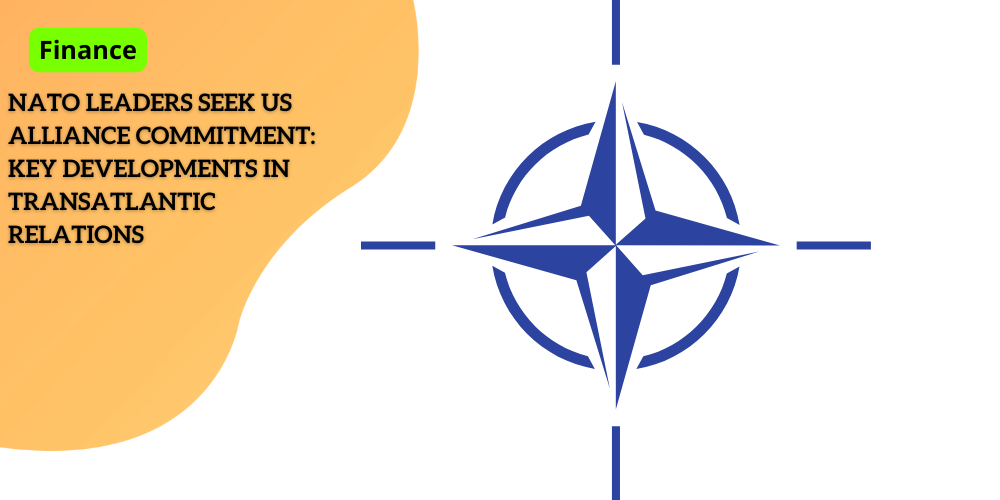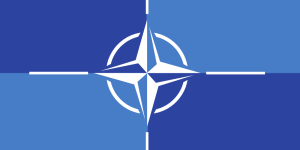NATO Leaders Seek US Alliance Commitment: Key Developments in Transatlantic Relations

Anúncios
Reassurance on US Commitment
NATO leaders are currently seeking reassurance from the US regarding its commitment to the alliance amid growing concerns about President Trump’s relationship with Russia.
At a recent meeting in Brussels, NATO Chief Mark Rutte and the newly appointed US Ambassador, Matthew Whitaker, aimed to reassure European allies of continued US support.
Anúncios
This reassurance comes in light of Trump’s critical rhetoric towards NATO and his perceived closeness with Moscow.
The US Secretary of State, Marco Rubio, is expected to further clarify America’s stance at the forthcoming NATO gathering. 🤝
Anúncios
Rising Tensions Due to Trump’s Stance ⚠️
Tensions have been on the rise due to Trump’s rapport with Russia, which has led to a sense of unease among European nations.
European leaders are notably worried about the US’s role as their protector against potential Russian aggression.
They fear that Trump’s favorable stance towards Russia could compromise their security.
European nations have expressed concerns about being excluded from critical security negotiations, especially in regard to the ongoing conflict in Ukraine, which was triggered by Moscow’s invasion in 2022. 🛑
Efforts to Calm European Allies’ Fears 🕊️
Both NATO Chief Mark Rutte and the new US Ambassador sought to calm these fears during their recent meeting in Brussels.
They emphasized that despite Trump’s strong rhetoric and the pressure on Kiev, the US remains committed to the alliance.
Whitaker noted that under Trump’s leadership, NATO could become stronger and more effective than ever, provided that all allies contribute fairly.
US Demands for Increased Defense Spending 💰
Washington has been clear about its expectations regarding defense spending, urging European nations to increase their contributions.
This has intensified the ongoing debate over burden-sharing within the alliance.
The US has signaled that while it has no immediate plans to withdraw its military presence in Europe, continued support hinges on Europe’s willingness to invest more in its defense.
This position raises pertinent questions about NATO’s future and its role in maintaining transatlantic security, a foundation of European stability for the past 75 years. 🇪🇺
Transition 🔄
As the meeting progresses, European ministers are expected to leverage the gathering to influence negotiations with Russia concerning the Ukraine war.
Stay tuned as we delve further into the European security concerns stemming from these developments and the broader implications for NATO’s future.
European Security Concerns 🇪🇺 Challenge to European Faith in US Protection
Over the years, the bond between the US and Europe has been a core element of continental security.
However, recent dynamics have put this trust to the test. The Trump administration’s untraditional approach has left European allies questioning the steadfastness of US commitment.
President Trump’s rapport with Russian leader Vladimir Putin adds a layer of complexity and skepticism. European nations are now more vocal about their unease, particularly with the increasing need to address security threats independently.
Heightened Security Anxieties Due to Russia 🧐
Russia’s military aggression in Ukraine, ongoing since its invasion in 2022, has only fueled these concerns.
The conflict has fundamentally altered the perception of immediate security threats.
The European Union sees this aggressive stance as a direct challenge to regional stability.
NATO leaders view Russia’s actions not just as a regional issue but as a potential precedent for broader confrontations with Europe.
The alliance must now contemplate stronger collective defense mechanisms to counter such threats effectively.
Exclusion from Crucial Negotiations 🚫
Adding to the unease is the feeling of being sidelined in critical security negotiations.
European leaders have expressed their discontent over not being significantly involved in discussions that directly impact their safety, particularly those involving the Russia-Ukraine crisis.
As NATO allies gather to deliberate, ensuring a unified front remains paramount. European ministers seek to play a more prominent role in these high-stake discussions, pushing for negotiations that include their input and address their specific concerns.
The state of European security and its faith in historical alliances is at a crossroads.
The evolving geopolitical landscape demands a reevaluation of strategies to ensure well-rounded protection that addresses both internal and external challenges. 🔄
US Demands and NATO’s Future Increased Defense Spending
The Trump administration has consistently pushed European countries to beef up their defense budgets. This demand stems from a belief that European nations have leaned too heavily on US military support without bearing adequate financial responsibility.
The US insists that its allies allocate at least 2% of their GDP to defense spending, a goal that has been agreed upon but not uniformly met within NATO.
Burden-Sharing Debate ⚖️
This emphasis on increased spending has sparked a heated debate within the alliance.
The concept of “burden-sharing” isn’t new, but it has gained fresh urgency given the changing geopolitical landscape.
Washington argues that a more equitable distribution of financial and military responsibilities is essential for the alliance’s sustainability.
European leaders, however, face domestic challenges and budget constraints that complicate the implementation of higher defense spending.
While some NATO members, like the UK and Poland, have already met or exceeded the 2% threshold, others lag significantly behind.
This disparity has led to tensions and questions about the fairness of the existing arrangement and the future solidarity of the alliance. 🤔
NATO’s Role in Transatlantic Security 🌐
As these debates rage on, broader questions about NATO’s role in maintaining transatlantic security have come to the fore.
The alliance, established in the aftermath of World War II, has been a cornerstone of European defense policy.
However, evolving threats and the increased assertiveness of Russia, particularly its aggressive actions in Ukraine, have led to a re-evaluation of NATO’s strategic priorities. 💭
The alliance must adapt to a world where hybrid warfare, cyber-attacks, and regional power struggles are increasingly prominent. Some argue that a greater focus on modernizing military capabilities and enhancing rapid response mechanisms is crucial.
Others believe that diplomatic efforts, particularly in managing the delicate relationship with Russia, should take precedence. 🖥️💬

Looking Ahead ⏳
Moving forward, NATO will need to find a balance between addressing US concerns about burden-sharing and ensuring it remains a cohesive, effective force for both European and global security.
This delicate balance will be essential as the alliance navigates the complex and often unpredictable waters of contemporary international relations.
Diplomatic Initiatives and Solutions European Ministers Seek Influence in Russia-Ukraine Negotiations
The ongoing conflict in Ukraine, ignited by Russia’s 2022 invasion, remains a top priority for NATO and its leaders.
With President Trump’s administration pushing for higher defense spending from European allies, European ministers are determined to ensure their voices are heard in negotiations with Russia.
Mark Rutte, the NATO chief, and Matthew Whitaker, the new US ambassador, have made it clear that despite previous tensions, efforts are being made to maintain solidarity within the alliance. 💬
European leaders have expressed unease about being sidelined in crucial security negotiations. As the situation in Ukraine continues to evolve, it’s vital for European ministers to have a more influential role.
This initiative aims to foster a united front in addressing the conflict and securing a peaceful resolution that meets the security needs of all NATO member states. 🤝
Financial Support for Ukraine in 2025 💸
Amid ongoing security concerns, NATO allies have pledged substantial financial support for Ukraine, amounting to $21 billion by 2025.
This commitment underscores the alliance’s dedication to bolstering Ukraine’s defense capabilities and supporting its sovereignty against Russian aggression.
The financial aid will fund various sectors, including military equipment, training, and humanitarian aid, ensuring that Ukraine continues to demonstrate resilience in the face of external threats. 🛡️
This significant financial backing also serves as a strategic move to deter further Russian advances and to demonstrate NATO’s unwavering support for its partners.
The promise of financial assistance is a clear signal to Moscow that NATO and its allies will stand firmly against any form of aggression. 💪
Strengthening Alliance Cohesion 💬
Despite the internal challenges, NATO continues to work towards maintaining and strengthening its cohesion.
The alliance faces various tests, from differing perspectives on defense spending to the integration of new members and managing relations with Russia.
However, collaborative efforts and diplomatic initiatives aim to bridge gaps and reinforce unity within the organization.
Several strategies are being implemented to foster cohesion:
-
Regular Dialogues: Continuous and transparent communication between member states ensures that all voices are heard, and concerns are addressed promptly. 🗣️
-
Joint Military Exercises: These exercises enhance interoperability and readiness, ensuring that NATO forces can operate seamlessly together. 💥
-
Defense Investment Plans: Encouraging members to invest in capabilities that benefit the alliance as a whole, rather than in isolation. 🛡️
By focusing on these areas, NATO aims to consolidate its position as a pivotal transatlantic security structure, ready to tackle modern threats while preserving its foundational values.
The challenges ahead for NATO involve balancing US global commitments with European defense needs, adjusting to the shifting geopolitical landscape, and maintaining the unity and effectiveness of the alliance.
Looking Ahead: Alliance Challenges
Balancing US Global Commitments and European Defense Needs
NATO faces a complex landscape as it strives to balance US global commitments with European defense needs.
The Trump administration has highlighted the importance of European nations taking greater responsibility for their security.
This shift has sparked debates about whether the US still views Europe as its strategic priority in deterring Russian aggression.
The US has multiple global commitments that require attention, including rising tensions in the Indo-Pacific and the Middle East.
This dispersion of focus can create a sense of insecurity among European NATO members, who traditionally rely on the US as their primary protector.
To mitigate these concerns, reinforcing strategic dialogue and ensuring consistent military presence in Europe remain crucial. Moreover, increasing European defense budgets and developing autonomous capabilities will be integral to reducing dependence on the US.
Implications of Changing Geopolitical Dynamics for NATO’s Future
Geopolitical dynamics are rapidly evolving, creating new challenges and concerns for NATO.
The rise of China as a global superpower and its growing influence in Europe requires NATO to reconsider its strategic priorities.
As NATO remains primarily focused on the threat from Russia, it must also develop strategies to address the challenges posed by China’s expanding economic and military reach.
Furthermore, Russia’s assertiveness in Eastern Europe, particularly in Ukraine, is unsettling. Since the invasion of Ukraine in 2022, NATO has been compelled to critically assess and enhance its defense posture.
Continued financial and military support for Ukraine is vital for ensuring regional stability and deterring further Russian hostility.
Europe’s significant financial commitment to Ukraine’s defense through 2025 reiterates NATO’s dedication to countering aggression and upholding international law.
NATO Strategies to Maintain Unity and Enhance Effectiveness
| Strategy | Description |
|---|---|
| Strengthening Internal Dialogue | Regular high-level meetings and transparent communication channels can address concerns and ensure all members are aligned on strategic objectives. |
| Joint Military Exercises | Conducting frequent joint exercises will enhance interoperability and signal a united front against potential threats. |
| Equitable Defense Spending | Emphasizing fair burden-sharing can prevent resentment and strengthen collective defense. Every member must contribute their fair share to ensure the success of the alliance’s sustainability. |
| Adaptation to Modern Threats | Investing in cyber defense, counter-terrorism, and missile defense systems will prepare NATO to confront contemporary security threats effectively. |
In conclusion, NATO’s unity and coherence hinge on balancing varied defense needs, addressing emerging geopolitical dynamics, and fostering equitable cooperation among members.
Europe and the US must work hand in hand, ensuring that the alliance remains robust and capable of managing future challenges.







